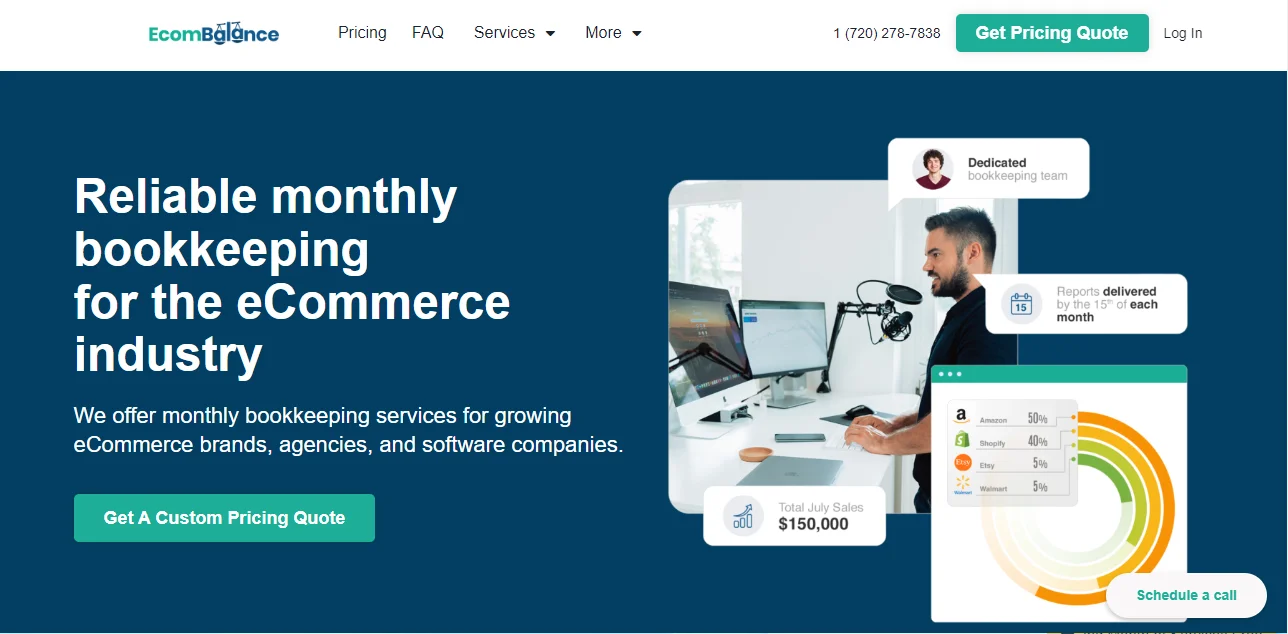
Introduction
Businesses process thousands of orders and interact with customers. They track inventory and launch marketing campaigns. In other words, ecommerce is growing at a rapid pace. When all of the above processes are performed manually, they become a complex and expensive mechanism. Equally important, they become slow. That is why automation in ecommerce is becoming one of the key factors in competitiveness.
Ecommerce automation is becoming a real necessity for those businesses that seek to scale up. It allows you to:
- Optimize daily operations;
- Minimize the human factor;
- Ensure the continuous development of the company.
The Manual Workload Challenge in Ecommerce
Many online store owners start with small order volumes. However, as the business grows, manual processing becomes inefficient.
Manual labor leads to:
- Data entry errors;
- Delays in order fulfillment;
- High personnel costs;
- Slow response times to customers.
Therefore, without automation, scaling a business becomes nearly impossible.
Why Automation Matters for Scaling Businesses
Thanks to Automation in ecommerce, companies can:
- Process orders faster;
- Support customers 24/7;
- Get accurate inventory data;
- Reduce operating costs.
All this allows managers to focus on strategy and brand development. As a result, on the new products.
Overview of Key Areas where Automation Delivers ROI
- Order processing.
Integration between sales channels and fulfillment systems. - Delivery.
Customer notifications. Automatic label creation. - Inventory.
Automatic real-time inventory updates. - Marketing.
Automatic email campaigns. Cart reminders. - Customer support.
Chatbots for frequently asked questions. - Accounting.
Tax calculations. Automatic report generation.
The Role of Custom Solutions in Ecommerce
When off-the-shelf Tools aren’t Enough
Off-the-shelf solutions are effective when a business has standard processes. But over time, a company begins to face unique challenges. These include:
- Complex catalog structure;
- Multiple warehouses;
- Specific logistics;
- Integration with non-standard CRM or ERP.
In such cases, ready-made ecommerce automation software often cannot take all the details into account. Then it makes sense to consider custom automation solutions that are created specifically for the business processes of a particular company.
Custom development allows you to:
- Integrate internal systems that do not support standard APIs;
- Implement non-standard order processing logic;
- Create unique analytical tools that reflect the metrics that are important to your business.
AI Agents and Custom Development Options
Modern automation in ecommerce goes far beyond simple scripts and triggers. AI agents are the new generation of automation. They allow businesses to act intelligently.
Such agents can do the following.
- Learn from order history and improve results;
- Respond to customers autonomously;
- Personalize offers for each buyer.
- Forecast demand and manage inventory.
If you want your business to go beyond standard automation and implement truly intelligent processes, consider creating your own AI agents. With this solution, you can gain complete control. The one over logic, interaction scenarios, and analytics.
Nowadays the leading team specializing in such solutions is Anadea platform. They are engaged in custom AI agent development, creating agents capable of:
- Self-learning,
- Analytics,
- Adaptation to the specific needs of ecommerce companies.
This approach helps make ecommerce automation not just automated, but truly intelligent. That is, with a focus on accuracy and flexibility. And therefore, efficiency.

Balancing Standardized vs. Tailored Automation
The key to successful e-commerce automation is the right combination of ready-made and custom solutions.
Custom systems allow you to scale without restrictions and control the process at a deeper level.
Standardized tools provide a quick start and an affordable price.
It is advisable for businesses to start with basic automated tools. As they grow, they can gradually integrate tailored automation that is fully consistent with their logic and goals.
Understanding Ecommerce Automation Fundamentals
Here we will talk about what qualifies as effective automation and the role of custom solutions in e-commerce. So, how to automate your ecommerce business?
What Qualifies as Effective Automation
Effective ecommerce process automation is the systematic implementation of tools that bring time savings and financial returns. The goal of any automation in e-commerce:
- Reducing manual labor;
- Minimizing errors;
- Optimizing the time that the team can spend on strategic tasks instead of repetitive actions.
Time Savings vs. Cost Investment: Balance
The main task is to find the optimal balance. The one between the cost of tools and the time saved.
If automation reduces time spent by 50% but is expensive, evaluate the long-term benefits.
The right balance between costs and benefits determines how effective workflow automation in ecommerce will be in the long run.
Tasks Best Suited for Automation
Not every process is worth automating. The best results come from automating the following tasks.
- Repetitive analytical actions.
Report updates. Sales forecasting. Inventory tracking.
- Routine operations.
Customer notifications. Creation of invoices. Order confirmations.
- Marketing.
Personalized email sequences. Automatic campaigns with reminders about abandoned shopping carts.
These tasks provide the maximum return on ecommerce process automation. Thus, allowing employees to focus on making strategic decisions.
When to Keep Human Oversight
Full automation without human involvement is often impractical. Even with the progress of technology. Human control remains important for the following situations.
- Processing returns or claims.
- Resolving non-standard situations with customers.
- Quality control of content or marketing messages.
- Strategic analysis of the results of automated campaigns.
The ideal ecommerce automation strategy is a collaboration between technology and human experience. In such a collaboration, the system performs routine tasks. At the same time, humans make the final decisions.
Core Operations: Order Processing, Inventory, and Fulfillment
Core operations are the heart of any online business. This is where ecommerce automation software demonstrates its true effectiveness. Every step affects speed, accuracy, and customer satisfaction. Automating these processes helps avoid errors and reduce execution time. It also ensures the stable operation of the entire supply chain.
Order Management System Integration
It allows you to connect all sales channels with fulfillment systems.
The advantages are as follows.
- Automatic transfer of order data.
- Automatic order routing to the appropriate warehouses.
- Real-time inventory syncing between platforms.
Shipping and Tracking Automation
Shipping automation eliminates the need for manual data entry.
- Shipping labels are generated automatically.
- Customers receive tracking notifications at the time of shipment.
- Managers can view delivery status on a single dashboard.
Inventory Management Automation
This automation is the key to effective control of goods.
- Inventory syncing combines balances across all platforms.
- Automatic low-stock alerts help prevent stockouts.
- Automated reordering predicts demand based on analytics.

Customer-Facing Automation: Service and Marketing
Customer interaction is a key element of success for any e-commerce business. Automation at this stage helps to:
- Maintain a high level of service;
- Respond quickly to requests;
- Personalize communication.
Thanks to modern marketing automation tools, e-commerce companies can serve thousands of customers simultaneously. At the same time, they can maintain an individual approach and high-quality interaction.
Chatbot Implementation for Common Queries
Chatbot automation allows you to process standard customer requests without the involvement of operators. In particular,
- Order status notifications;
- Preliminary customer qualification;
- Answers to FAQs.
When a query is complex, the system automatically escalates it to a manager.
Email Response and Campaign Automation
Marketing automation ecommerce covers:
- Order confirmation and shipping updates;
- Abandoned cart recovery. That is, automatic reminder emails;
- Post-purchase follow-ups. This refers to requests for reviews and product recommendations.
The above helps maintain contact with the customer without additional resources.
Product Listing Automation
It saves hours of manual work:
- Bulk updates for prices, descriptions, and availability;
- Publishing products on multiple platforms at once;
- Synchronization of attributes in all catalogs.
Backend Automation: Bookkeeping and Implementation
Backend processes often remain “behind the scenes” of e-commerce. However, they are what ensure the stability and financial transparency of a business. Automating accounting, reporting, and management system implementation allows you to:
- Reduce the risk of errors;
- Increase data accuracy;
- Save your team time.
This is where e-commerce automation helps create a solid foundation for strategic decisions and sustainable company growth.
Transaction Recording and Categorization
- Automatic import of payments from processors (PayPal, Stripe).
- Bank feed reconciliation for accounting accuracy.
- Rule-based categorization of expenses.
The above minimizes human error and speeds up financial reporting.
Financial Reporting Automation
- Scheduled reports. Monthly or quarterly.
- Real-time P&L dashboards. To analyze profits.
- Tax automation. It helps you prepare reports without stress.
Choosing and Implementing Automation Tools
Evaluating Software
When choosing, consider:
- Integrations with existing systems;
- Cost of ownership and support;
- Scalability as your business grows.
Implementation Strategy
Start small. Automate one process.
Train your team to use the tool.
Measure KPIs. That means time, errors, customer satisfaction.
Common Pitfalls
Over-automation. Excessive automation without control.
Integration issues. System incompatibility.
Underestimating the human factor. Lack of a personal approach.
What Is EcomBalance?

EcomBalance is a monthly bookkeeping service specialized for eCommerce companies selling on Amazon, Shopify, eBay, Etsy, WooCommerce, & other eCommerce channels.
We take monthly bookkeeping off your plate and deliver you your financial statements by the 15th or 20th of each month.
You’ll have your Profit and Loss Statement, Balance Sheet, and Cash Flow Statement ready for analysis each month so you and your business partners can make better business decisions.
Interested in learning more? Schedule a call with our CEO, Nathan Hirsch.
And here’s some free resources:
- Monthly Finance Meeting Agenda
- 9 Steps to Master Your Ecommerce Bookkeeping Checklist
- The Ultimate Guide on Finding an Ecommerce Virtual Bookkeeping Service
- What Is a Profit and Loss Statement?
- How to Read & Interpret a Cash Flow Statement
- How to Read a Balance Sheet & Truly Understand It
Conclusion
Automation is a strategic necessity for any online business.
E-commerce automation allows companies to reduce costs and increase accuracy. It also ensures fast customer service.
You may start small.
Automate one process.
Measure the results.
Gradually expand the scale.
Maintain a balance between technology and human control.
If you use automated e-commerce wisely, you will gain a real advantage in the market. Namely, stability and flexibility in all conditions. And, consequently, efficiency.




